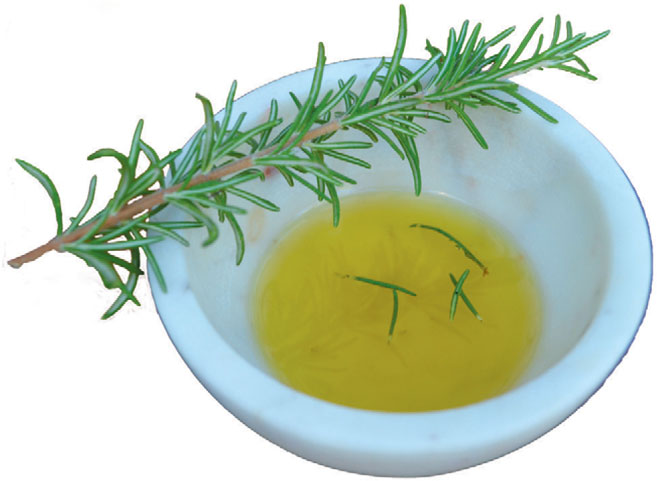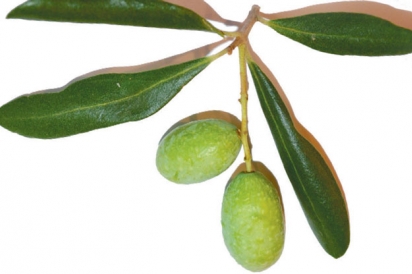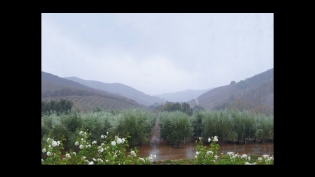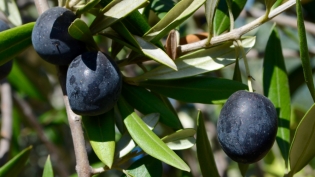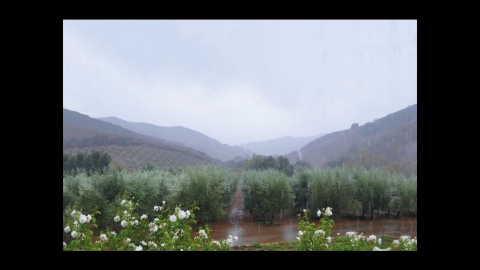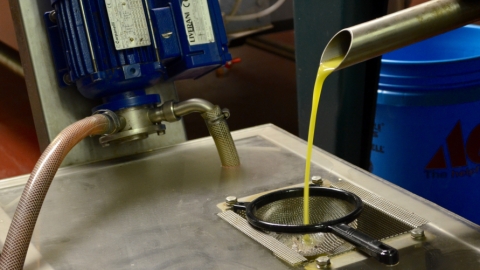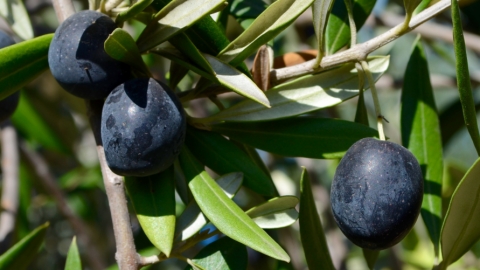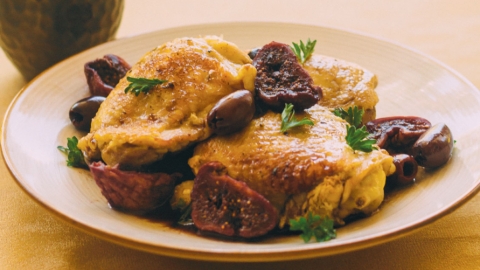Olives: Small Fruit Packs a Big History — and Controversy
All olives start green, becoming black as they ripen, and can be harvested at many different degrees of ripeness. When picked early, the olives will tend to yield more peppery (or pungent) and bitter oils with green fruity notes like grass, artichoke, green olive, herbs or spice. As the fruit matures, riper flavors emerge, such as nutty, almond, ripe olive or tropical notes.
Variety and maturity work together in olive oil style. Some varieties are intrinsically higher in the polyphenols that contribute pungency and bitterness. Growing conditions and processing also impact the style, to a lesser degree.
Growers in Ventura County—and throughout California—cultivate olive varieties from around the world. Here are some varieties grown in the state for olive oil. Those with VC are among the varieties grown by the local growers we interviewed.
Arbequina—From Northern Spain, this variety is the most planted oil olive in California, almost always grown in super-high density. The traditional style in Spain is a later-harvest, very fruity oil with tropical and almond notes, but it’s used to create a wide range of oils with greener notes and distinct pungency but low bitterness.
Ascolana (Ascolano)—An Italian variety traditionally grown for table olives, Ascolana has risen to fame in recent years in California as an oil olive. The flavor is distinctive, herbaceous with notes of apricot/ peach and a nutty finish.
Bosana—The best-known cultivar from the Italian island of Sardinia. It can be used to make a complex, very intense green fruity oil. VC
Coratina—The major variety in Southern Italy and gaining importance in California. Coratina produces a range of flavors from grassy and artichoke to cherry, depending on harvest ripeness. Famous for its abundant polyphenols, it has high bitterness when green. VC
Frantoio—From Italy, Frantoio is widely planted in California. It is a mainstay of the “Tuscan blend,” an intense green-style oil. Frantoio is very fruity and aromatic, and depending on harvest maturity, flavors range from fresh-cut grass and artichoke to floral and nutty, with moderate bitterness and pungency. VC
Hojiblanca—A cultivar from Southern Spain, used both for table olive and oil production. Predominant green flavors are herbaceous and tomato leaf, ripe notes are tropical and floral. It has medium to light bitterness and pungency. VC
Mission—California’s original olive, brought by the Franciscan missionaries from Mexico and planted alongside the missions up the coast. It is a dual-purpose table and oil olive. The oil can be intensely bitter when green, with notes of pine and resinous herbs. With a later harvest, it becomes buttery and mild, with tropical fruit/pineapple flavors. (There are Mission trees all over Ventura County—most of the street trees, in fact.) VC
Leccino—This is another cultivar that originated in Italy but is popular in California. Modest polyphenol content allows for an early- harvest oil that is full of cinnamon, grassy, green almond, nutty and buttery notes with light bitterness and medium pungency. Leccino is another component of the “Tuscan” blend. VC
Nocellara del Belice—One of the best-known Sicilian cultivars, this is used to make Castelvetrano table olives as well as a distinctive olive oil. Tomato leaf flavors are typical, with balanced bitterness and pungency. VC
Picholine—A dual-purpose variety from France that has spread around the world. It has high bitterness when green, with herbaceous notes. The late-harvest oil is sweet and nutty.
Picual—This is the most important cultivar in Spain and has started to gain hold in California. It was dissed for years because it is common in cheap, poorly made commodity olive oil, but well-made early-harvest Picual produces an excellent aromatic oil with tomato leaf and subtle tropical notes, and balanced bitterness and pungency.
Taggiasca—A cultivar from Northern Italy, where it is traditionally harvested ripe to make a fruity, soft oil. In California, it tends to be harvested on the early side, when it has distinct bitter and pungent character, and complex green fruity, floral flavors. VC


